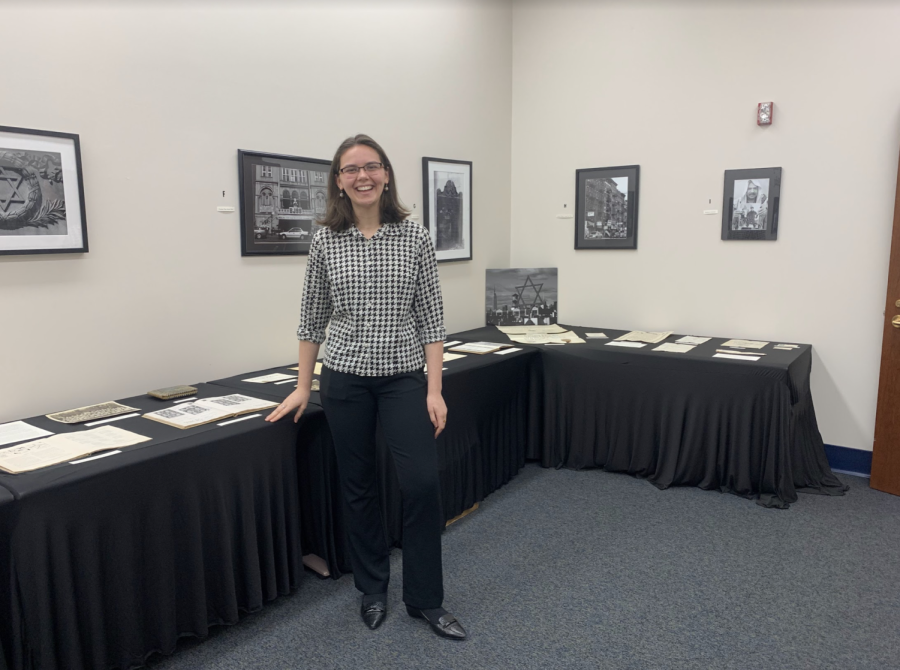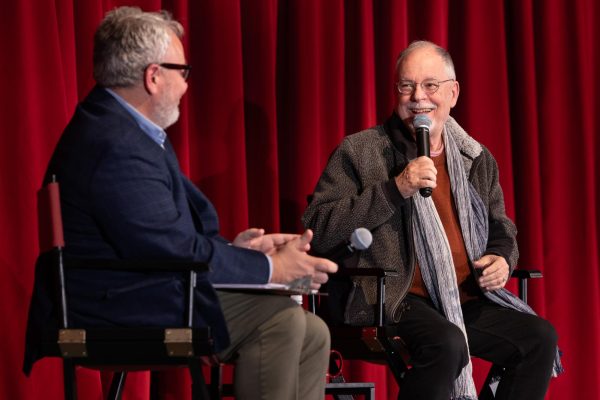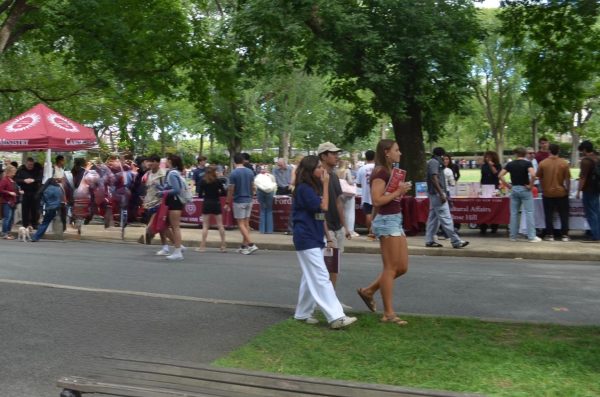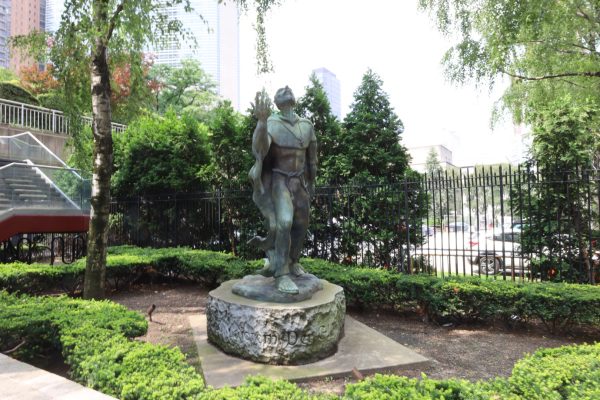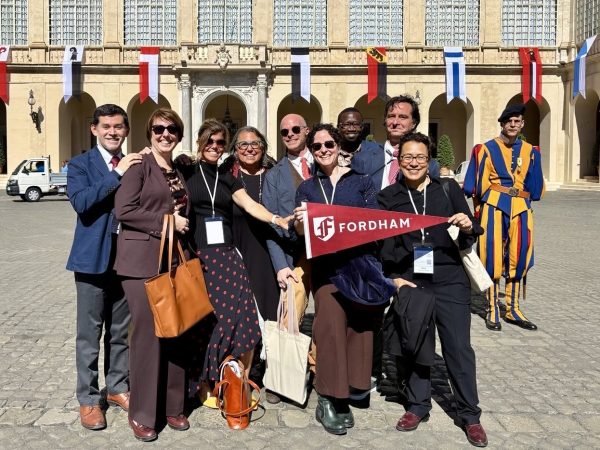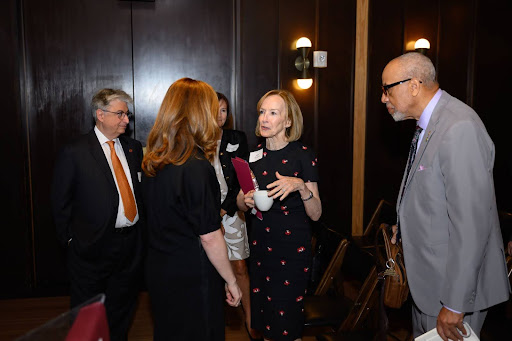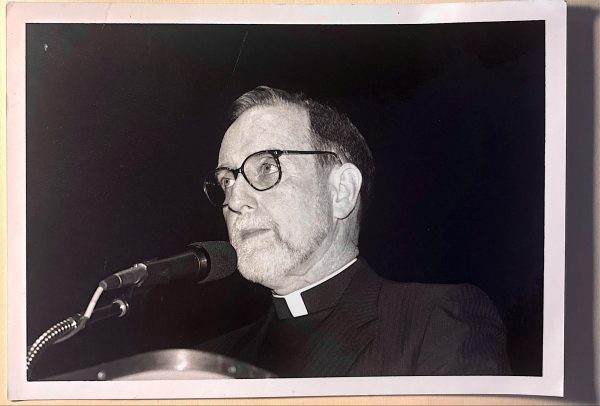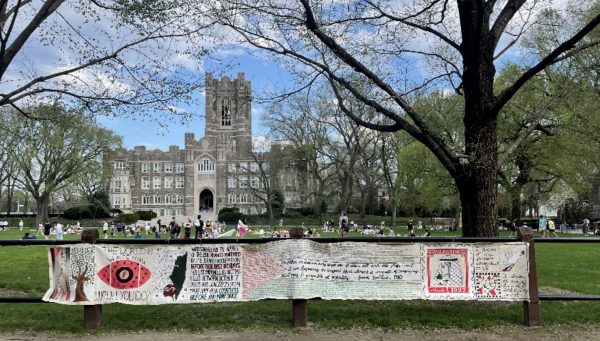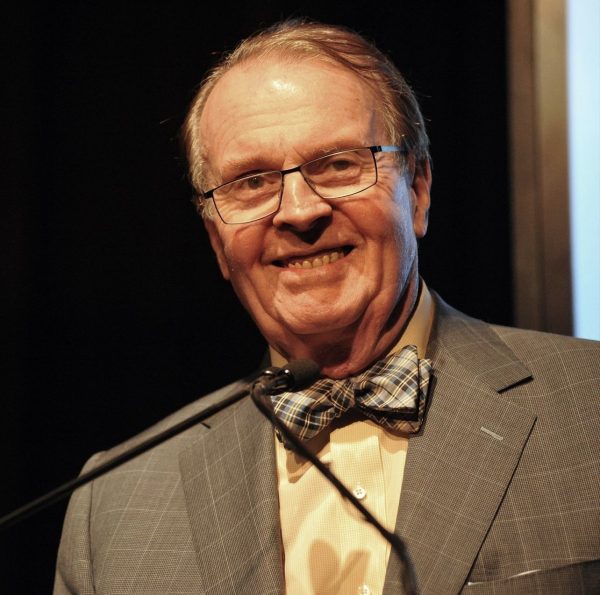Fordham Displays Remnants of Jewish Life in the Bronx
Walsh Library preserves an exhibit called “The Remnants of Jewish Life in the Bronx.” The pieces establish Professor Magda Teter, Ph.D’s vision of showcasing the geographic breadth of Jewish society consisting of high school yearbooks, memoirs, memory books, some ephemera restaurant receipts, business information and advertisements.
This past Wednesday, March 1, Reyna Stovall, FCLC ’25, who curated the exhibit, and Sophia Maier, FCRH ’23, shared their research with students, faculty and staff in the “Jews in the Bronx: Oral and Archival Histories” event.
As Fordham is based in the Bronx, Stovall and Teter came to the realization that there was a good period of time, through the ’40s and ’50s, where Jewish people made up most of the Bronx and thus began documenting this period by collecting ephemeras/artifacts.
Stovall began curating this exhibit with a limited number of documents. Ellen Meshnick’s parents’ old documents from living in the Bronx are a large part of the collection. As news of the collection has widely been shared, new artifacts are donated, and the collection continues to grow.
“We had a few other documents as they related to what was in there. I was pulling through those and trying to incorporate them so that people viewing the exhibit can get a well rounded idea of what the Bronx was because Faber-Meshnick was one family, and Bronx consists of thousands of Jewish families. Now that we have more documents we’re able to tell more stories but mine was focused on showing off their experiences,” said Stovall.
Stovall is a Jewish studies minor, and at the end of her freshman year she participated in the Center for Jewish Studies Fellowship. Her deep interest in Jewish studies brought about learning of the Jewish studies internship she’d participate in the fall 2022 semester.
“Dr. Teter and I were talking about what I wanted to do with my internship. She showed me what had just been sent to her Faber-Meshnick documents. We both thought it would be amazing if we showcased Jewish history of the Bronx, and it becomes a much bigger thing than the one internship exhibit,” said Stovall.
It currently is its own exhibit with many eager to donate. Her favorite piece is a joke dictionary, originally a blue hard-covered book with classic Yiddish words and funny definitions. The closing of the book states the “hatikvah,” the Israeli national anthem, a different version than the national anthem of today.
Maier describes the discussion that took place during the event.
“The event was a discussion between myself and Reyna Stovall, who presented our undergraduate research concerning the Jewish Bronx, and professors who specialize in the field who asked us follow-up questions. Those professors were Dr. Daniel Soyer, Dr. Ayala Fader and, as moderator, Dr. Ayelet Brinn. Conversations included methodology, the limitations of oral histories, cooperative housing communities, what makes a Jewish neighborhood and more. I considered it a wonderful learning experience and an exceptionally fun way to share my work with others who are equally as passionate about it,” said Maier.
Dr. Teter has historical objects from around the world that originate from the 15th, 16th and 17th centuries that are accessible to her students, but nothing that is as close to home as Fordham. This initiated the search for Bronx artifacts.
“So it had this geographic breadth as I was acquiring these materials [and] realized we have nothing from the Bronx so far, but we are here in the Bronx. I started searching for the Jewish Bronx thinking what I might find so that when students take Jewish history class I can take them as far as Australia or home to Fordham University in the Bronx, instead of historical experience,” said Dr. Teter.
She began with a bar mitzvah invitation from 1951. She pursued rare ephemeras that seem to not survive or are rare of Jewish experience in the Bronx. Once, she participated in a webinar with photographer Julian Voloj, where she was able to display remnants of the past presence of Jews of half a million that had moved out. She announced to the audience of 200 people on the webinar if there were families with archives they wanted to share to get in contact with her. A few weeks after she received boxes of some archives Stovall worked on, one being the Faber-Meshnick family.
There are two Jewish history classes taught by Teter at the Rose Hill campus, as it is difficult for Lincoln Center students to travel uptown for class and with the archives assignments.
An assignment for class is writing page descriptions for artifacts in the archives, and it becomes a catalog for students and viewers to enjoy at the end of the semester.
Professor Mattie Armstrong, who teaches European history and British colonial history, uses some artifacts from this collection and from special collections in his classes. Other professors use it extensively as well.
There are two ways of going about the offered internship. One is doing an independent research project earning credit or for interested students how many will participate in working with collections and are paid.
In the summer, Fordham offers a stipend to students and free housing to work on special projects with faculty members, where students develop projects with Teter and collection.
Teter hopes the future of the archive will have it made available to the public through digital means and integrate into classes and exhibit a part of the public history program.
Her favorite, a newer addition to the archive, is a trowel dating back to 1916.
“It is a trowel, [a] commemorative trowel, that was used to put a cornerstone for the Daughters of Jacob,” said Dr. Teter.
Stovall and Maier are collecting oral stories inspired by the Bronx African American History Project in use of oral histories.
“Currently, I am training Reyna to conduct oral histories (first with me and then she will do so on her own), and she and I work together to transcribe them. My favorite item she has curated is a little wedding book of songs from the 1940s that includes a list of Yiddish phrases with joke definitions. I am not involved with the Jewish Studies internship, but they currently employ me as a student researcher to do the oral history work for the Bronx Jewish History Project,” said Maier.



































































































































































































